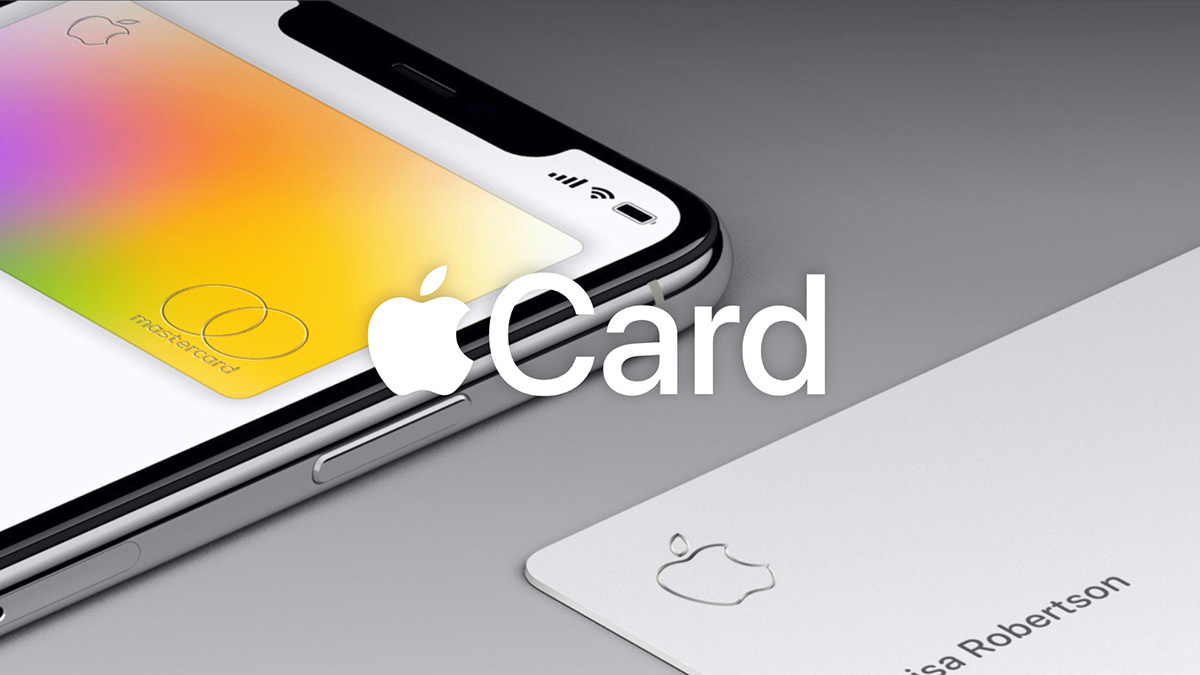

Finance
What Is Apple Card Credit Limit
Published: March 5, 2024
Learn about the Apple Card credit limit and how it can impact your finances. Discover tips for managing your credit limit effectively in this comprehensive guide.
(Many of the links in this article redirect to a specific reviewed product. Your purchase of these products through affiliate links helps to generate commission for LiveWell, at no extra cost. Learn more)
Table of Contents
Introduction
Understanding the Apple Card Credit Limit
The Apple Card, introduced by Apple Inc. in 2019, has transformed the landscape of credit cards by offering a seamless integration with Apple Pay, transparency in fees, and a user-friendly interface through the Wallet app. One of the pivotal aspects of any credit card is the credit limit, which determines the maximum amount a cardholder can borrow. Understanding the Apple Card credit limit is essential for users who seek to leverage its benefits effectively.
When delving into the intricacies of the Apple Card credit limit, it's crucial to comprehend the factors influencing its determination, the significance of this limit, and strategies to increase it. This article aims to provide a comprehensive understanding of the Apple Card credit limit, empowering users to make informed decisions and optimize their financial management.
The Apple Card credit limit is not only a numerical threshold but also a reflection of the cardholder's creditworthiness and financial responsibility. By exploring the factors that contribute to the establishment of this limit and the methods to enhance it, individuals can gain valuable insights into managing their credit effectively while harnessing the features offered by the Apple Card.
Understanding Apple Card Credit Limit
As an Apple Card user, comprehending the dynamics of the credit limit is paramount. The credit limit denotes the maximum amount of funds that you can borrow using your Apple Card. This limit is determined by various factors, including your credit history, income, and existing financial obligations. When you receive your Apple Card, it comes with an initial credit limit based on the information available at the time of application.
It’s important to note that the credit limit is not fixed and can be adjusted over time based on your financial behavior and creditworthiness. The initial credit limit is set by considering multiple aspects, such as your credit score, income, and existing debt obligations. Apple Card utilizes a transparent algorithm to assess an individual’s creditworthiness, aiming to offer a fair and personalized credit limit that aligns with the user’s financial capacity.
Moreover, the Apple Card credit limit is closely linked to the concept of credit utilization, which refers to the ratio of your outstanding credit card balances to your credit limit. Maintaining a low credit utilization ratio is advantageous for your credit score and can potentially contribute to future credit limit increases. By understanding the significance of credit utilization and responsible credit management, Apple Card users can optimize their credit limit and overall financial well-being.
Furthermore, the Apple Card credit limit is intricately connected to the user’s financial habits and the overall health of their credit profile. Timely payments, responsible credit usage, and prudent financial management can positively influence the credit limit over time. This underscores the importance of cultivating sound financial practices to maximize the benefits offered by the Apple Card.
By comprehending the nuances of the Apple Card credit limit, users can make informed decisions regarding their spending, borrowing, and overall financial planning. The credit limit serves as a fundamental parameter that shapes the borrowing capacity and financial flexibility of Apple Card holders, making it essential to grasp its implications and the factors that govern its determination.
Factors Affecting Apple Card Credit Limit
Several key factors influence the determination and potential adjustment of the Apple Card credit limit. Understanding these factors is crucial for users seeking to manage and optimize their credit limit effectively.
- Credit History: Your credit history plays a pivotal role in shaping your Apple Card credit limit. A strong credit history, characterized by timely payments, low credit utilization, and a diverse credit mix, can bolster your creditworthiness and potentially lead to a higher credit limit. Conversely, a limited credit history or adverse credit events may result in a lower initial credit limit.
- Income: Your income level is a significant determinant of your credit limit. A higher income generally correlates with a higher credit limit, as it reflects a greater capacity to manage and repay credit obligations. When applying for the Apple Card, providing accurate income information is essential, as it directly influences the initial credit limit assigned to you.
- Debt-to-Income Ratio: The ratio of your existing debt obligations to your income, known as the debt-to-income ratio, is a critical consideration in credit limit assessments. A lower debt-to-income ratio signifies a healthier financial position and may contribute to a more favorable credit limit. Managing and reducing existing debts can positively impact this ratio and potentially lead to credit limit increases.
- Payment History: Your track record of making timely payments on credit accounts significantly influences your credit limit. Consistently paying bills on time demonstrates financial responsibility and reliability, which are favorable attributes in credit limit evaluations. Conversely, late payments or delinquencies can have adverse effects on your credit limit and overall creditworthiness.
- Credit Utilization: The utilization of your available credit also plays a crucial role in credit limit considerations. Maintaining a low credit utilization ratio, ideally below 30%, signals prudent credit management and may contribute to credit limit increases over time. Responsible utilization of credit and regular monitoring of credit card balances are essential in this regard.
By recognizing and actively managing these factors, Apple Card users can position themselves for potential credit limit adjustments and cultivate a strong financial foundation. The interplay of credit history, income, debt management, payment behavior, and credit utilization collectively shapes the Apple Card credit limit, highlighting the significance of proactive financial management and responsible credit practices.
How to Increase Apple Card Credit Limit
Increasing the credit limit on your Apple Card can provide greater financial flexibility and borrowing capacity, enabling you to pursue larger purchases and manage unexpected expenses effectively. While the Apple Card credit limit is initially determined based on various factors, users have the opportunity to enhance their credit limit over time through strategic financial management and proactive measures.
Here are actionable steps to potentially increase your Apple Card credit limit:
- Regular Credit Utilization Monitoring: Consistently monitoring and maintaining a low credit utilization ratio is pivotal in demonstrating responsible credit usage. Keeping credit card balances well below the credit limit showcases prudent financial management and may contribute to credit limit increases.
- Timely Payments: Making timely payments on your Apple Card and other credit accounts is essential. A history of on-time payments reflects financial reliability and may positively influence credit limit evaluations.
- Income Update: Updating your income information within the Wallet app can provide Apple with current and accurate data to reassess your credit limit. If your income has increased since the initial application, updating this information may potentially lead to a higher credit limit.
- Requesting a Credit Limit Increase: Within the Wallet app, users have the option to request a credit limit increase. This process involves providing additional financial information for review. While approval is not guaranteed, a compelling case supported by a strong credit history and responsible financial behavior may lead to a credit limit adjustment.
- Responsible Credit Management: Continuously practicing responsible credit management, including avoiding excessive debt accumulation, timely bill payments, and prudent financial decision-making, can contribute to a positive credit profile. This, in turn, may position you favorably for potential credit limit increases.
It’s important to approach credit limit increases with a proactive and informed mindset, recognizing that these adjustments are contingent on various financial factors and the lender’s assessment. By implementing these strategies and maintaining sound financial habits, Apple Card users can work towards optimizing their credit limit and leveraging the benefits of their card effectively.
Conclusion
The Apple Card credit limit is a fundamental aspect of the cardholder’s financial experience, shaping their borrowing capacity and influencing their overall financial management. Understanding the dynamics of the credit limit, including the factors affecting its determination and strategies to potentially increase it, empowers users to navigate their financial journey with confidence and prudence.
By delving into the factors that influence the Apple Card credit limit, such as credit history, income, debt management, payment behavior, and credit utilization, users gain valuable insights into the multifaceted nature of credit assessment. Proactively managing these factors and cultivating responsible financial habits can position individuals for potential credit limit adjustments and contribute to a robust credit profile.
Furthermore, the potential to increase the Apple Card credit limit through diligent credit utilization monitoring, timely payments, income updates, and strategic requests for credit limit adjustments underscores the proactive role that users can play in shaping their credit experience. These actionable steps, when coupled with prudent financial decision-making, form a holistic approach to optimizing the credit limit and leveraging the benefits of the Apple Card effectively.
In essence, the Apple Card credit limit reflects not only financial parameters but also the user’s financial responsibility and creditworthiness. By embracing a proactive and informed approach to credit management, individuals can harness the potential for credit limit increases and navigate their financial landscape with astuteness and foresight.
Ultimately, the Apple Card credit limit serves as a dynamic component of the cardholder’s financial toolkit, evolving in tandem with their financial behavior and decisions. Empowered with a comprehensive understanding of the credit limit and equipped with actionable strategies, users can embark on a journey of financial optimization, leveraging the Apple Card to its fullest potential while fostering a robust and resilient credit profile.














